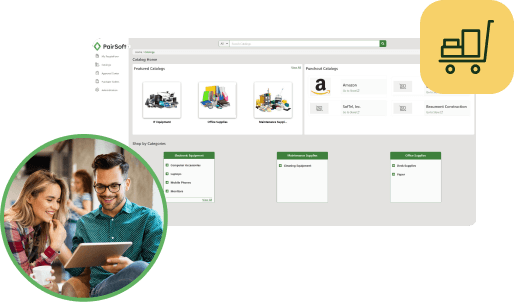
PairSoft
The strongest AP automation, document management, procurement, and fundraising automation platform for mid-market and enterprise companies with integrations to your ERP system.
View all posts by PairSoftPairSoft

A well-designed and adequately-enforced requisition approval process is fundamental to successfully managing corporate expenditures. But there’s a sweet spot in designing an approval process. If it’s not stringent enough, you may overpay, exceed budget, and promote wasteful spending. If it’s overly burdensome and lengthy, you risk slowing the process unnecessarily, disrupting vital operations and alienating employees. In our continuing series covering basics of procurement, we take a closer look at how you can optimize the second step in the procurement cycle – approving the spend. What is the key to a smart and efficient approval process?
In general, the simpler the approval process is, the better. Overly complex approval processes slow the cycle and frustrate employees – who may then seek ways to bypass the requisition process. You’ll likely want to establish multiple approval workflows with different levels of complexity, depending upon the details of the requisition. Some of the variables affecting the workflow path might be:
Developing a requisition approval workflow requires some thought and consideration – and likely some input from stakeholders. There are many factors to consider; here are a few:
You might choose to allow purchase requests from an approved vendor or an approved shopping list to bypass the usual approval process, especially if they are under a certain dollar threshold.
Likely you’ll have multiple workflows consisting of a different set of approvers, depending upon factors such as the requesters’ role, department, requisition amount, vendor involved, items being purchased, etc.
You don’t want the requisition process to suffer when an approver is on vacation, or late in reviewing. Consider setting up alerts and notifications to keep the process moving, alternate reviewers for when a reviewer is unavailable, and an escalation workflow for when a reviewer is unresponsive.
Of course, each company is different, and not all purchases will require the same level of review, but here are the typical players in the purchase requisition review/approval process.
One of the most important steps in the requisition approval process is ensuring the expenditure does not exceed the budget category. To keep everyone accountable, you may want employees and their department managers to see the calculated budget available when they are entering or approving a purchase requisition. Even if you don’t share the available budget, you may want the approval workflow to flag the purchase requisition for over budget approval routing automatically.
Once you have your requisition approval process in place, you’ll want to continually monitor it to ensure it is serving your goals and objectives. Some of the metrics you may wish to monitor are:
The approval process is a fundamental and vitally important step in your procurement cycle. It is a step made easier with a flexible, scalable eProcurement solution designed with configurable rules and workflows to promote efficiency while maintaining accountability and control.
Talk to an expert today to uncover how your team’s procurement stacks up against the top performers in your sector.


